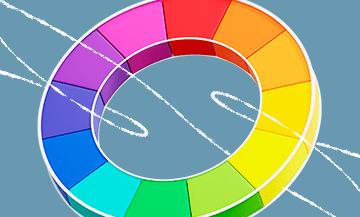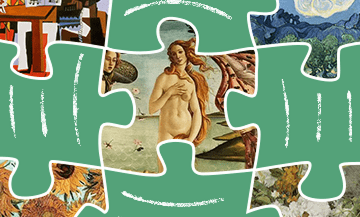Are you no longer a beginner artist, with a collection of interesting works, and now seriously considering the possibility of selling them? So, where to start if you aim to present your work in a gallery?
It’s important to understand how the process of working with galleries works and how to approach them in the first place. Once you grasp the essence, everything will become much easier and clearer.
After reading this article, I guarantee one less problem: working with galleries will be one step closer!
Basic principles of gallery work
Art galleries play a crucial role in the art world by providing artists with a unique platform to showcase their creativity and skill.
It is very important to choose the right gallery if an artist is aiming for
recognition, a good reputation, and successful sales of their paintings.
In simple terms, a gallery is a wonderful space that connects creators, collectors, buyers, and simply art enthusiasts.

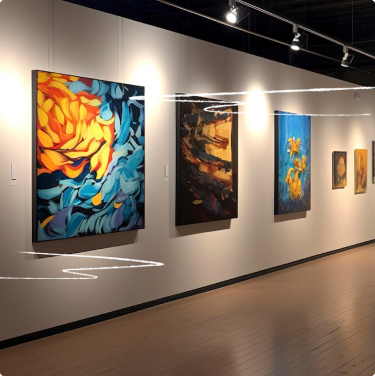
Why should an artist participate in an art gallery exhibition?
- First, exhibiting in a gallery provides an opportunity to meet creative like-minded individuals, potential fans, and collectors who are looking for exactly what you have created.
- Second, participating in a gallery exhibition adds authority and significance to your work. It’s like a signature on the artwork, telling viewers: “This is art that deserves attention.” Being chosen by a gallery acts as a mark of quality, strengthening trust in your work.
- Third, an exhibition is not only a platform for your works but also a place where creative partnerships are born. Interaction with other artists, curators, and collectors can lead to new projects and even career growth.
- Finally, an exhibition in an art gallery is not just a display but a professional presentation of your creativity. Galleries provide the necessary environment to ensure your art is presented in the best possible light.
If you decide to present your work in a gallery, you will take the next step in your career. The main thing is to give it a try!
How do galleries work with artists?
Before reaching out to art galleries, you need to understand how they operate. Naturally, each organization may have some differences and its own internal policies, but overall, the process is similar. You might hear such expectations from galleries:
“Collaboration with a gallery, like any other collaboration, starts with an idea. If you have an interesting idea for an exhibition, you can start negotiations. We are open to discussing the organization of exhibitions with both artists and curators.”
“For our gallery, it is important that the project is relevant and that we have a clear understanding of the idea we want to convey to visitors. Additionally, the project’s budget should be considered.”
Or:
“The artist should provide their works, a biography (including information about the start of their artistic career, education, and participation in other exhibitions), as well as a list of their awards, if any.”
And finally:
“We look for artists at youth exhibitions ourselves. Recommendations are not particularly significant to us, and we do not accept artists based on personal connections.”
Commission or direct sale?

There are two ways to sell artwork through a gallery—either with a commission or the gallery buys the work outright.
In most cases, transactions between the artist and the gallery are based on a commission principle. This means that your work stays in the gallery for a certain period. Neither you nor the gallery receive any money until the work is sold. After that, the proceeds will be divided according to the terms of the agreement.
Depending on the specific conditions and the state of the local art market, this commission can be around 30-40 percent or even more.
Such percentages can be disheartening, but it’s important to remember that galleries also incur certain expenses. They have to pay for space rental, utilities, staff salaries, and marketing activities. Hence the financial demands.
The nuances of cooperation with galleries
- Choosing a Gallery: to find the right gallery, you need to research different galleries and their specializations. Investigate which artists are already represented in the gallery, what exhibitions are held, and their pricing policy.
- Presentation of Your Works: your art portfolio should be professional and well-organized. Provide the gallery with a detailed description of each piece, including technique, size, and price.
- Contacting the Gallery: reach out to the gallery via email or phone. Introduce yourself and offer to show your works. If the gallery is interested, they may request a personal meeting or ask you to send photos of your paintings.
- Preparation for the Exhibition: if everything goes smoothly in the previous stages, the gallery will offer you participation in an exhibition. In this case, prepare for the exhibition, discuss dates, conditions, and requirements with the gallery.
- Marketing and Promotion: galleries generally handle the marketing and promotion of the exhibition. However, you should also be active in promoting your works through social media and your own network of contacts. The more people know about your exhibition, the better!
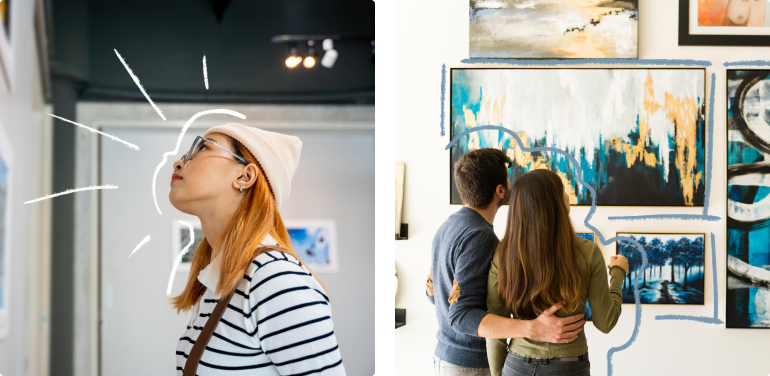
Who determines the price?
Again, the approach varies from gallery to gallery, but in general, gallery owners aim to collaborate with artists in a way that the pricing satisfies both parties.
You might hear the following:
“If an artist has no previous sales experience, the gallery will set the prices for their works. If the artist is already known in the market, the pricing is determined jointly.”
Or it might be:
“Pricing is determined by the artist, and the gallery receives a commission from the sales. However, we can certainly help emerging artists in setting the prices for their works.”
There are many talented gallery owners as well as those who are less successful in this field. Your task is to separate the wheat from the chaff, choosing only the best and most reliable partners.
Be cautious and beware of agreements if you sense that something might go wrong. Trust yourself.
How do you know if your work will sell?
No one can guarantee that the paintings will be successfully sold. This depends on many factors, including the appeal of the gallery to potential buyers, the effectiveness of marketing efforts, and how much people like the works. Is it strong enough for them to want to buy it?
Much depends on the taste of the potential buyer and the purpose for which they are purchasing the work. Some buy a painting for themselves, others as a gift, and there are collectors for whom purchasing a work of art is of special value.
You can only help yourself by choosing a gallery that suits you well: in terms of the style of your works, reasonable pricing, good presentation, and framing of the paintings.
How much work is needed?
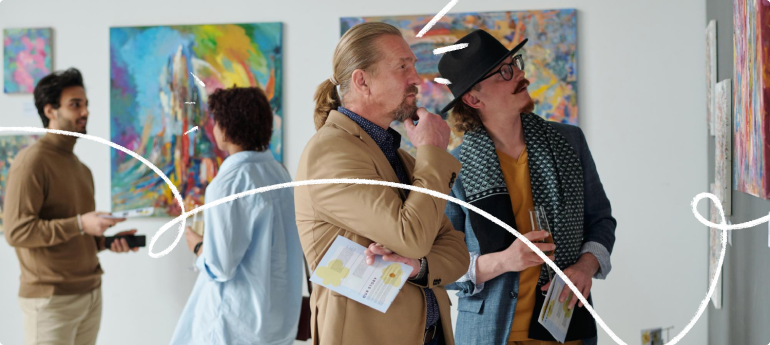
Keep in mind that a small gallery can be filled with 20-30 works, creating a cozy and rich space.
Large galleries or exhibition centers, on the other hand, might aim for larger collections—hundreds or even thousands of works—to provide visitors with the widest range and diversity.
A key factor is also the theme of the exhibition. If it is limited to a certain period, style, or art movement, then the number of works might be adapted to these parameters.
Ultimately, it is important to strive for a balance between the quantity and quality of works.
It is best for an artist to prepare a diverse selection of their works. One or two works, especially if they are not of significant size, may be insufficient.
It is also wise to participate in exhibitions with artists of varying levels of fame. This will instantly lend status to your works and provide you with invaluable experience for better progress.
How to contact the gallery?
The first option is to visit in person, bringing photographs of your works. The second is to write or call in advance to schedule a meeting.
If you decide to contact the gallery via letter, it is important to include several photographs of your works or a link to your portfolio website.
However, to attract the recipient’s interest and encourage them to view the website, the letter must be very compelling.
It is recommended to first reach out to the gallery via email or through social media. You should send a brief introduction about yourself, a description of the project idea, and photographs of your works. If you want a prompt response, write during the gallery’s business hours.
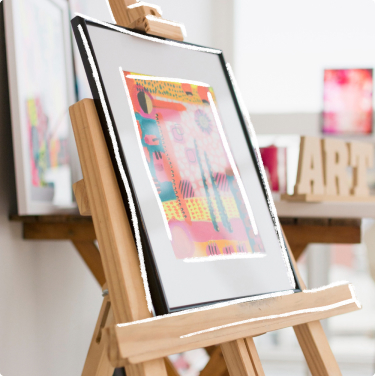

This is how you establish a working relationship with a gallery:
Usually, the artist calls, visits in person, or sends a letter with photographs of their works. This initial stage of communication is the starting point for interaction with the gallery.
The gallery reviews the artist’s work, and if it meets all the requirements, it is ready to welcome them into its community. Sometimes, the gallery actively searches for new talents. Additionally, there are situations where works that do not fully meet professional standards but possess originality and a unique style are considered; this might be the beginning of a future great artist.
It is important to observe proper etiquette:
- Do not visit on weekends or in the evening. A weekday is more appropriate for visiting the gallery.
- Do not bring original works with you. It is preferable to provide copies.
- Remember that appearance and first impressions are important in the art world. You are selling not only your paintings but also yourself. Maintain a neat appearance, but don’t be afraid to show some eccentricity—non-standard thinking is welcomed in the creative community.
- When dealing with large galleries, it is advisable to contact them in advance and arrange a meeting. Respect your time and theirs.
The nuances of cooperation with galleries
Concluding agreements is always an important stage, especially in the field of art. For example, in large art galleries formal contracts are prevalent and it is advisable to be aware of the many pitfalls to protect yourself and your art.

Before signing a contract with a gallery, you should ensure you get answers to the following questions:
- How long will your work be exhibited in the gallery?
- When should you retrieve your work?
- Will your work be part of a permanent or temporary exhibition?
- Who is responsible for damage while the work is on display?
- What is the gallery’s commission rate?
- How quickly will you receive payment after the sale of a work?
- What happens to unsold works?
- Does the gallery offer any discounts, and how will this affect your share?
- Is it possible to participate in other galleries simultaneously?
- What if a buyer expresses interest in ordering your work directly?
- How does the gallery plan to promote your work?
- What marketing steps will you need to take?
- Will you receive a report with an inventory of the works?
Formats of cooperation between gallery and artist

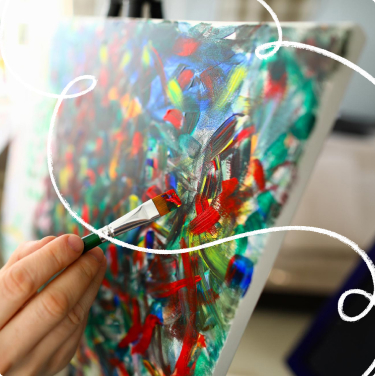
Exhibition Projects:
- Solo Exhibitions: the gallery may organize an exhibition dedicated to the works of a specific artist.
- Group Exhibitions: the artist can participate in a joint exhibition with other artists, which is beneficial for exchanging ideas and attracting a wider audience.
Artwork Sales and Commissions:
- Artwork Sales: the gallery may sell the artist’s works through exhibitions, auctions, or online.
- Commissions: galleries typically take a commission from the sale of artworks; this is standard practice.
Permanent Representation:
- Exclusive Representation: the gallery enters into an exclusive representation agreement with the artist, meaning the artist sells their work only through this gallery for a certain period.
Residencies and Grants:
- Art Residencies: galleries organize residencies, providing artists with space and time to work.
- Grants: sometimes grants are awarded to artists to provide financial support.
Educational Programs:
- Workshops and Lectures: galleries often invite artists to conduct their workshops or lectures.
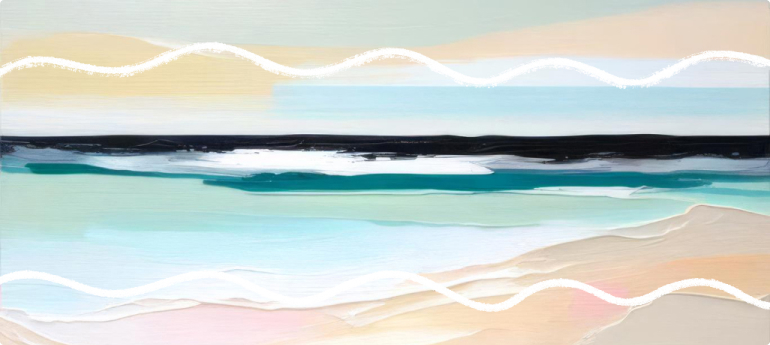
Participation in Fairs and Festivals:
- Art Fairs: participating in a fair with the support of the gallery attracts a new audience and expands the artist’s fan base.
Online Sales and Social Media:
- Online Sales: galleries can stimulate online sales of the artist’s work.
- Social Media Promotion: collaboration may also include active promotion of the artist’s works through social media and other digital channels.
The format of collaboration usually depends on the mutual interests of the parties and can be adapted according to specific needs and goals. It is important to develop clear agreements and terms of cooperation in writing to avoid misunderstandings in the future.
Cooperation with international galleries
The opportunities in local and international markets vary greatly, which is why many artists strive to reach the global stage and start collaborating with overseas galleries.
If you feel you have already achieved certain heights in your country, you might consider looking at galleries abroad. How can you capture their interest?
The most obvious way is to write to all the galleries that might be a good fit for you. It may seem a bit desperate, but it works. Many artists have used this strategy to gain participation in exhibitions in Cannes and Madrid.
Naturally, there is a risk that your letter might end up in spam, but if you are noticed, you will have a real chance to make an impression. Young galleries and projects actively seek fresh talent, and if your work is attractive, it will catch their eye.
If not, at least you will have valuable contacts.
There are other ways, such as participating in international competitions. However, this largely depends on your persistence and luck. Some people manage to conquer competitions, but in this format, not everything is in your control.
How to choose an international gallery?
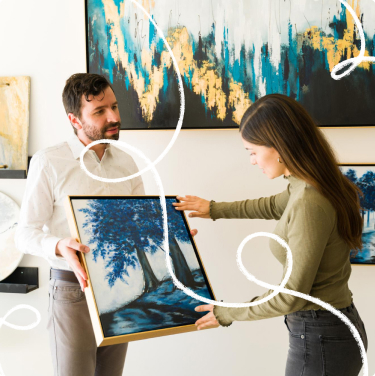
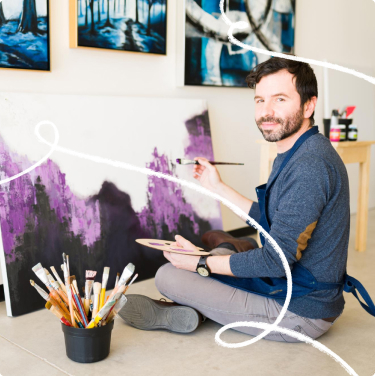
First and foremost, focus on your internal perception—do you like this gallery? Consider what it can offer you, examine which artists are already collaborating with it, and what styles are currently represented in its exhibitions.
Research the gallery’s location and evaluate its orientation towards the global art market. Remember, active promotion of artists, including through social media, is a key aspect, and it’s beneficial if the gallery actively promotes its creators.
Review the portfolios of the represented artists: does the gallery work only with local artists, or does it also consider international artists? Is their experience relevant to your vision of art? Learn about their preferences and goals, and see if you are a good fit for each other.
You need to feel whether a particular gallery will be a place where you want to develop. And, of course, it’s essential to be proficient in writing and speaking English—for communication with foreign galleries, this is important.
Collaboration with online galleries
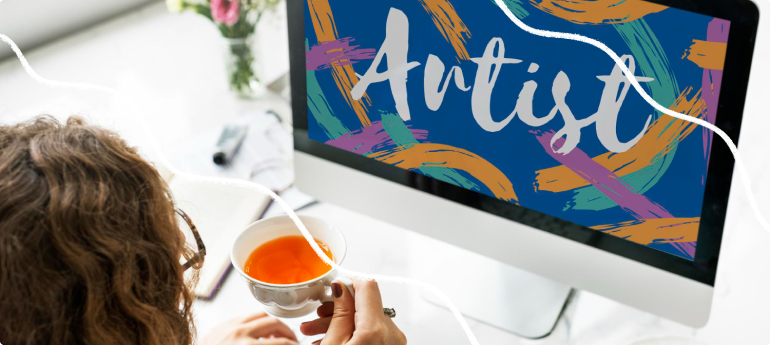
Collaborating with online galleries is a unique opportunity for artists to showcase their talent and reach a new audience. Worldwide.
The undeniable advantages of online galleries:
- Exhibitions and contests: many online galleries organize virtual exhibitions and contests, which is a great opportunity for artists to stand out among competitors and gain recognition.
- Global visibility: publishing works in online galleries allows artists to overcome geographical boundaries. Their art becomes accessible to people all over the world.
- Promotion on social media: many online galleries are integrated with social media, so artists can actively promote their work in the online space.
- Feedback and criticism: online galleries offer feedback from a broad audience. This helps artists better understand how their work is perceived and which direction to develop further.
- Sales: online galleries often provide a platform for selling artworks. This allows artists to monetize their creativity and achieve a stable income. Moreover, they can attract commissions and receive sales commissions.
- Access to resources and training: online galleries often provide artists with access to educational resources, workshops, and seminars. Artists can continuously improve, learn about new techniques, and stay updated on trends in the art world.
Conclusion
It can be confidently stated that exhibiting one’s works in a gallery is not just an opportunity to present your creativity to the public, but also an important step in the professional development of an artist. A gallery is a platform where talent can fully blossom, and viewers become witnesses to a unique perspective on the world through the lens of art.
Undoubtedly, the process of creating paintings is a magnificent creative adventure, but sharing your creation with others and seeing how it interacts with their perception gives artistic work a new meaning.
Ultimately, gallery walls become not just a frame for artworks, but also gateways that open new horizons for the artist and their audience. The conclusion is simple and convincing: start collaborating with galleries, and it will definitely pay off!
Question-answer
Create a Portfolio:
- Prepare photographs of your paintings. Include information about yourself, your style, techniques, and themes of your works.
- Provide a brief description of each painting, including dimensions, materials used, and your thoughts behind the work.
Research Galleries:
- Find galleries that match your style and theme.
- Study their requirements for presenting works and their application procedures.
Prepare Your Application:
- Prepare your artistic resume, including exhibitions, project participation, and education (if applicable).
Submit Your Application:
- Follow the gallery’s instructions for submitting your application.
- Include a link to your website or portfolio for additional information.
Set Reasonable Prices:
- Research the prices of works by other artists.
- Consider your experience, reputation, and the size of the work when setting prices.
Ensure Quality Feedback:
- Be prepared to discuss and explain your works.
- Collect feedback and use it to your advantage.
Participate in local exhibitions and art fairs. There, you can meet potential buyers in person and receive feedback. Engaging with the local art community can also open up new opportunities for you.
Showcase your work on Instagram, Facebook, and Pinterest. Social media is a great way to share the creative process, stories about your artistic journey, and, of course, the art itself.



